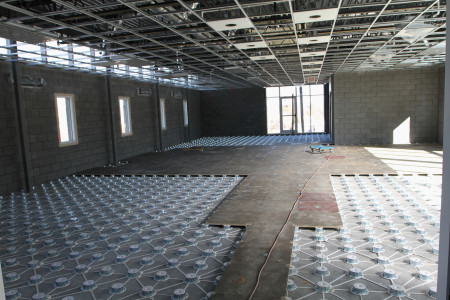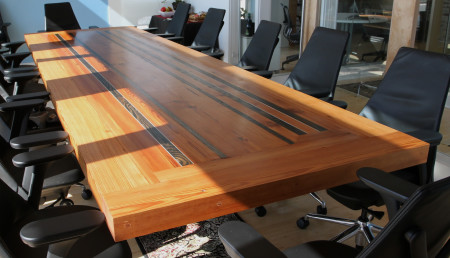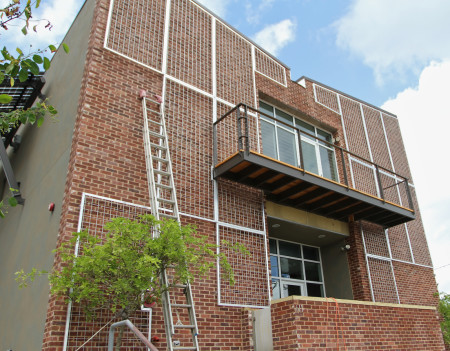Construction and Demolition Recycling
The following article, written by Allison Cooke Oliverius and featuring GreenBy3 was published in December 2013 in a special publication by SC Biz News entitled RecyclomonicsSC.
How businesses are collecting and recycling construction waste and turning it into other products.
About 8,000 pounds of waste are typically thrown into the landfill during the construction of a 2,000-square-foot home, according to Sustainable Sources, an online green building resource.
Forbes.com reports just over 600,000 houses were built in 2012 in the U.S., down from 2.5 million units built during the housing boom in 2005. When you multiply the typical amount of waste tossed into a landfill by the number of homes built, that equals a lot of construction material clogging up landfills, when so much of it can be reused or recycled.
One of the bulkiest and least biodegradable pieces of construction debris is carpet. About 5 billion pounds of carpet is thrown away each year, according to Bloomberg.com.

A definition of DIRTT: DIRTT stands for “Do It Right This Time” and is a method of construction using demountable systems that can be reconfigured without requiring demolition or tearing out. The systems do not use drywall or metal studs and are environmentally sustainable as well as easy to take down and reassemble.
Wellman Plastics in Florence County is helping divert used carpet from the landfills here in South Carolina and along the East Coast. It operates a 2 million-square-foot facility in Johnsonville, where it recycles carpet and plastic bottles.
“We bring in used carpet that’s been taken out of homes/businesses. We have a process we use to convert it back into a product like engineering resin, which goes into the automotive industry,” said Glen Odom, vice president of Wellman Plastics.
Florence-based Wellman recycles nylon carpet products. They purchase materials from suppliers who collect used carpet from installers. Wellman’s patented process takes carpet through a method that reduces it to pellets. The product is then sold to companies that mold products for the automotive industry. Any leftover material from the recycling process is sent to a cement kiln and burned for fuel.
“The good news is that the carpet we are using was material that was going to the landfills. Once it made it there, it stayed there forever,” Odom said. Instead, Wellman sells the recycled material to clients.
“The automotive industry wants to introduce as much recycled as possible back into their vehicles and we’re able to provide a product that’s equal to the virgin material. It meets their qualifications and it allows them to use the materials in applications such as manifold covers, fan shrouds, under hood applications where you need a heat resistant product. They can also use it as a marketing opportunity because they are helping the environment and using green products where possible.”
Companies like Wellman Plastics and MetalTech Systems are doing their best to educate clients, including those in the construction industry, about recycling options.
In addition to educating clients, Richard Howard, president and owner of MetalTech Systems on Pawley’s Island, says making it easy for clients to recycle is key.
MetalTech Systems designs and builds construction debris recycling systems, as well as single- and multi-stream recycling systems that are used at material recovery facilities. Their systems use a combination of automatic and manual sorting processes to separate materials.
For example, single-stream recycling bins – where all materials go into the same bin – have increased participation rates among residents and businesses. “When people had to sort their materials into separate bins, we had a low participation rate. But when you make it easier for them with single-stream recycling, the participation rates jump up,” Howard said.
The same is true for construction debris. The contents of a construction dumpster can be run through machines equipped with various vibrating conveyor belts that help sort materials. Manual separation is used in addition to the automatic system.
Once the materials are separated and bailed, they can then be sold back into the market. For example, concrete and shingles can be used as a roadbed material, and drywall can be recycled into textured wall sprays. Large items, such as reusable lumber and drywall, along with cabinets, lighting and other items, can be donated to organizations such as Habitat for Humanity for reuse in construction projects.
When it comes to deciding exactly what can be recycled from a construction site, Charleston-based GreenBy3 walks clients through the process. Owner Jorge Riano works as the client representative for commercial construction projects. Recent projects include PeopleMatter’s new headquarters on King Street in Charleston, and Biz611, a business incubator in Hendersonville, N.C.
PeopleMatter’s project involved the renovation of a historic building that had burned at one time. Deconstruction of the building revealed beams ranging from 12 to 16 feet that were charred black.
“Because they were charred, nobody thought the wood was any good, but I knew there was something under there. I came up with the idea to use the wood for a conference table for them,” Riano said. He collaborated with local wood craftsmen who helped design and construct a large conference table, as well as a desk for PeopleMatter’s president Nate Dapore, and a high-top table for a break room.
When the beams were milled, the charred end pieces were retained and used to create a one-of-a-kind inlay.

GreenBy3 reclaimed wood from the original building on the construction site to make a one-of-a -kind conference room table for PeopleMatter’s new headquarters building in Charleston SC.
“This table has a story,” Riano said. “It’s supported by a steel structure on one leg. The table itself is about 400 pounds and had to be brought up on a crane. It’s part of this building’s history and its future.”
In Hendersonville, N.C., Riano coordinated the deconstruction of two existing buildings and then the construction of Biz611 in its place. Materials from the original buildings reused in the new building include 9,000 bricks used on the north-facing vertical green wall, iron railings to create a bike rack and reclaimed doors made into desks.
Other materials used in the Biz611 project that were selected from GreenBy3’s own inventory of reclaimed materials include office furniture, DIRTT raised floor and office walls, and sliding barn-style doors. Materials from the deconstruction not used in Biz611 were taken by local companies and repurposed or recycled on local construction projects. For example, some of the excess brick and block were crushed and used in road construction.

Reclaimed brick is used on the facade of the building for BIZ611 in Hendersonville, NC.
“Everything we do is based on how we can help our clients and the environment by repurposing, whether in our own business, our clients’ projects or in our community,” Riano said.
Tagged: Business Info, Green Building, Reclaimed Materials
